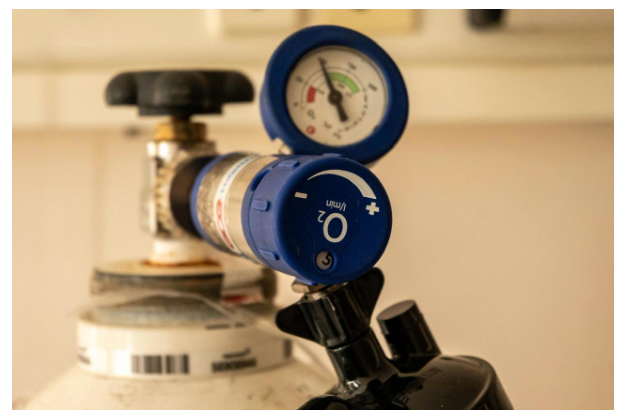How to Care and Maintain Lateral Flow Assay Equipment

Lateral flow assays (LFA) have become vital diagnostic tools in healthcare, providing quick and reliable results for a range of applications, from infectious disease testing to environmental monitoring. Proper maintenance of lateral flow assay equipment is essential to ensure consistent performance, accuracy, and longevity of the devices. This article will cover the critical aspects of maintaining and caring for your lateral flow assay equipment, with special attention to handling the lateral flow test kit components and ensuring equipment cleanliness and accuracy.
Why Proper Maintenance is Essential for Lateral Flow Assay Equipment
Lateral flow assays rely on a set of components and reagents to deliver precise results, so improper care can compromise test accuracy. For laboratories, clinics, and research facilities using these devices, routine maintenance safeguards against test errors, increases equipment longevity, and reduces replacement costs.
Proper care also ensures that operators can rely on the test kits for accurate and repeatable results, which is especially crucial in clinical settings where patient health decisions may hinge on these tests.
Key Steps in Maintaining Lateral Flow Assay Equipment
- Regular Calibration
Lateral flow assay equipment requires regular calibration to ensure accurate readings. Some kits may come with built-in calibration tools, while others might need external standards. Calibration should be done based on the manufacturer’s guidelines, typically before each batch of tests or at scheduled intervals. This process helps confirm that the equipment readings align with the expected outcomes, reducing the risk of error. - Keep a Controlled Environment
Environmental factors, such as temperature and humidity, can impact the performance of lateral flow test kits. Storage and testing areas should be kept at recommended conditions. For example, many test kits require storage at room temperature, ideally between 15-30°C (59-86°F), and away from direct sunlight or extreme temperature fluctuations. Additionally, humidity levels should be monitored, as high moisture levels can degrade test strips and reagents. - Routine Cleaning of the Equipment
Cleaning the lateral flow assay equipment is essential to prevent contamination. Dust and residue from previous tests can lead to inaccurate results, so establish a regular cleaning routine based on manufacturer recommendations. Use only approved cleaning agents that won’t damage the sensors or other delicate parts of the device. After cleaning, ensure that all parts are thoroughly dried before reassembly to prevent moisture from interfering with test accuracy. - Proper Handling of Lateral Flow Test Kits
Lateral flow test kits are sensitive, and mishandling can affect results. Always follow the recommended procedure for handling, especially when loading samples or reagents onto the test device. Use gloves to avoid contamination and ensure proper disposal of each kit after a single use, as they are typically designed for one-time applications. - Avoid Reagent Expiration
Reagents are a crucial part of lateral flow test kits and can expire, especially when not stored correctly. Expired or improperly stored reagents may not react as expected, leading to inaccurate results. Always check expiration dates and store reagents according to guidelines, often in a cool, dark place to maximize their shelf life. - Conduct Regular Inspections and Troubleshooting
Inspecting your lateral flow assay equipment on a routine basis helps to identify potential issues early. Look for signs of wear and tear, residue build-up, or malfunctioning parts. Some lateral flow assay equipment may also include diagnostics or self-checks. If there are consistent issues with test accuracy, it may be beneficial to consult the manufacturer’s troubleshooting guide or contact technical support. - Document Maintenance and Results
Proper documentation is an essential part of maintaining lateral flow assay equipment. Keeping records of calibration dates, maintenance activities, and any observed issues helps to track the equipment’s performance over time and ensures adherence to quality standards. This documentation is particularly important in regulated environments, such as clinical labs, where regulatory compliance is necessary. - Store Equipment Correctly
When not in use, store lateral flow assay equipment and test kits in a safe, dry place to avoid accidental damage or contamination. Ensure that storage containers are clean, free from dust, and appropriately labeled. Equipment-specific storage cases, if provided, should be used as they offer added protection against environmental factors.
Conclusion
Maintaining lateral flow assay equipment is critical for achieving reliable, accurate, and repeatable test results. By implementing regular calibration, environmental controls, thorough cleaning, and proper handling procedures, users can optimize the performance of their lateral flow test kits. Proactive maintenance and care not only improve test accuracy but also extend the lifespan of the equipment, ensuring dependable performance over time. Whether you’re a clinical technician or a laboratory researcher, following these maintenance guidelines will help you make the most of your lateral flow assay equipment, fostering accurate diagnostics and ultimately supporting better decision-making.
